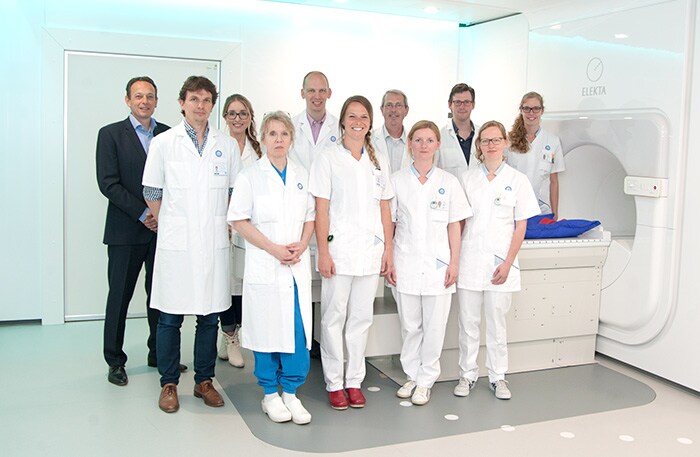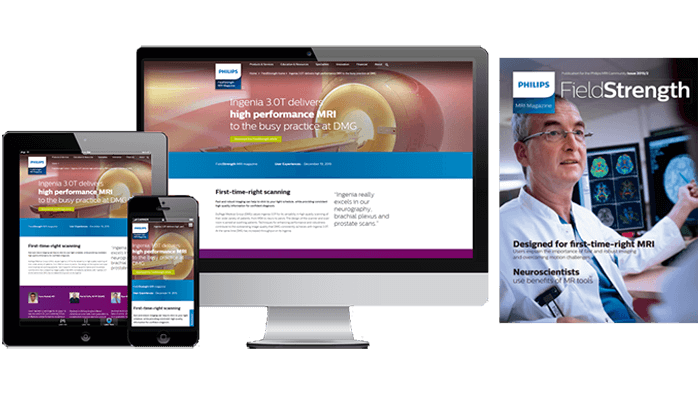FieldStrength MRI magazine
News - October 2017
Fully integrated Elekta linac and 1.5T Philips MRI usher in the clinical era of high field MR-guided radiotherapy
Clinicians at the University Medical Center Utrecht used their MR-guided linear accelerator (MR-linac) for the first time to treat a patient with cancer, a major milestone. The world’s first high field MR-linac is designed to enable use of high definition MRI in real time during radiotherapy. This capability is developed to reduce the uncertainty about the position of the tumor target and surrounding normal tissues, possibly allowing treatment margins around tumors to be reduced, increasing the dose per session and potentially eradicating the tumor with fewer visits to the hospital.
“A magnificent milestone for patients, whose welfare inspired the development of MR-linac”
First treatment with MR-linac successfully performed
According to UMC Utrecht “As an MRI pioneer and innovator, helping the modality enter this ground-breaking new discipline of MR-guided radiotherapy is a tremendously gratifying achievement for Philips and its clinical and industry partners,” says Romhild Hoogeveen, Marketing Director MR Therapy at Philips. “But most importantly, this is a magnificent milestone for patients, whose welfare inspired the system’s development and research testing by Elekta, Philips, University Medical Center Utrecht and the Elekta MR-linac Consortium.”
A new and exciting phase in the creation of a high-field MR-guided linear accelerator (MR-linac) recently began in

The MR-linac team at UMC Utrecht
Real-time monitoring of tumor target
The MR-linac will be named Elekta Unity* as announced at the 2017 ESTRO. It is the world’s first high-field MR-linac, developed to allow physicians to harness high definition MRI in real-time during delivery of therapeutic radiation beams. This capability is designed to significantly reduce the uncertainty about the position of the tumor target and surrounding normal tissue. Real-time MR imaging during beam delivery can provide valuable insight into where the radiation beams will go, enabling clinicians to confidently see and track difficult to visualize anatomies. This may lead to a reduction in treatment margins around tumors, an increase in the dose per session and potentially eradicating the tumor with fewer visits to the hospital.
Seven international clinical centers collaborate
UMC Utrecht is the site where the UMC Utrecht-Elekta-Philips research and development effort started. Philips contributed the premium quality 1.5T MRI scanner and modified its complete magnet design, including coils and software for the MR-linac in collaboration with Elekta, UMC UMC Utrecht is the founding member of the Consortium, which also includes 6 other internationally renowned cancer centers. The Consortium collaborates to investigate how MR-linac technology can lead to improved patient outcomes for existing radiation therapy indications and extend radiation therapy for additional indications.

